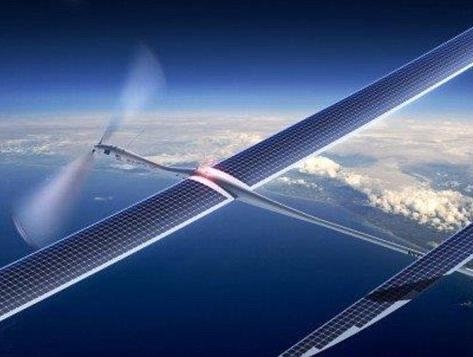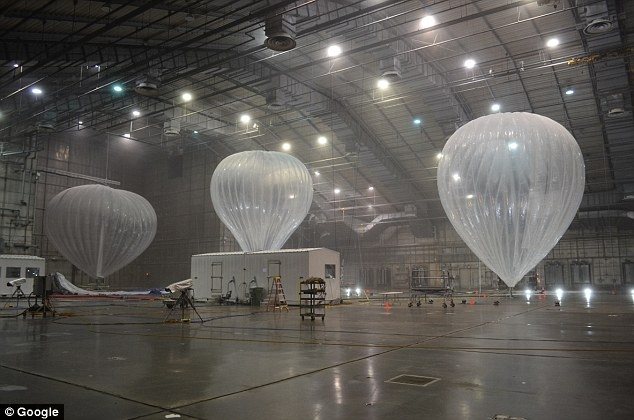Victoria Woollaston
The Daily Mail
Google is the latest tech giant to begin testing ways to beam the internet across towns, cities and into people's homes using drones.
Facebook is already working on a drone-powered network and now files have revealed Google has launched a similar project in New Mexico.
Several prototype receivers were installed at Spaceport America during the summer, along with a flight control centre, as part of a secretive project dubbed SkyBender.
The files were obtained by The Guardian.
According to the documents, Project SkyBender is using drones to test what's known as millimetre-wave radio transmissions.
High frequency waves can send large amounts of data quickly and can be up to 40 times faster than current 4G LTE speeds.
However, the transmissions only work over short distances, typically a tenth of the distance of existing 4G phone signals.
According to Mark Harris at The Guardian: 'To get millimetre wave working from a high-flying drone, Google needs to experiment with focused transmissions from a so-called phased array.'
A phased array is an antenna fitted with multiple elements that radiate the signal.
Mobile networks, including Nokia, are also testing millimetre-wave technology.
Google's solar-powered drones could be sent to rural areas, for example, to increase coverage, or boost web speeds for mobile users in towns and cities.
The files continued that the SkyBender system is being tested using drones made by Google Titan as well as aircraft from a company called Centaur.
Google bought Titan Aerospace in April 2014 and the firm specialises in high-altitude drones.
Facebook is working on similar technology, which uses a solar-powered drone with the wingspan of a Boeing 737.
Last year, engineers unveiled a drone with a 140ft (43 metre) wingspan that weighs less than 1,000 pounds.
It uses lasers to send internet signals to stations on the ground.
The drones hover between 60,000ft (18,300 metres) and 90,000ft (27,400 metres), above the altitude of commercial airplanes, so they are not affected by problematic weather.
In particular, during the day they will float at the higher altitudes, and will drift down to lower altitudes during the night to conserve energy.
Google is also attempting to connect even the most remote areas of the world with web-enabled balloons.
Under its Project Loon initiative, Google last year unveiled plans for a 'ring' of 300 floating hotspots that would create a 'continuous string around the world' that can provide web access even if one balloon moves in the wind.
Speaking to Leo Kelion at the BBC, Mike Cassidy, vice-president of Project Loon said: 'We hope to build our first continuous ring around the world, and to have some sort of continuous coverage for certain regions.
'And if all goes well after, then after that we will start rolling out our first beta commercial customers.'
Project Loon is a network of balloons travelling on the edge of space, designed to connect people to the internet in remote parts of the world.
Two years ago in June, Google launched 30 balloons into the stratosphere from New Zealand.
These balloons floated at altitudes up to 15.5 miles (25km) and travelled as fast as 200mph (324 km/h).
In February 2014, the record streak for a balloon lasting in the stratosphere was 50 days. By March 2015, the record was 187 days.
In a blog post announcing the Indonesian trial, Mr Cassidy continued: 'Starting next year, the top three mobile network operators in Indonesia will begin testing Project Loon balloon-powered Internet.
'Over the next few years, we’re hoping that Loon will help put high-speed LTE Internet connections within reach of more than 100 million Indonesians, giving them access to the limitless educational, cultural, and economic opportunities of the internet.'
He described Loon balloons as 'floating cell phone towers in the sky', flying on the winds at altitudes twice as high as commercial planes.
To plot the positions of its balloons, Alphabet uses data from the National Oceanic and Atmospheric Administration to predict weather patterns and improve the balloon's ability to navigate winds.
According to the firm, once the project is up and running, the balloons could supply internet to an area of about 780 square miles (2,020 square km) - twice the size of New York City.










